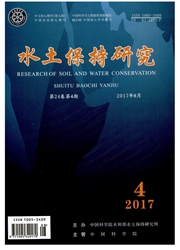

 中文摘要:
中文摘要:
为了计算洪水碎片的推迟的沉积分泌物,流进主要的河,小规模斜槽测试被设计在云南省模仿 Jiangjia 沟壑和 Xiangjiang 河的融合的过程,中国。由测试观察和数据分析,在它进主要的河的入口被发现与体积密度,碎片流动的融合角度和主要的河有一种靠近的关系以后,推迟了碎片流动的沉积分泌物,比率在之间每统一碎片流动和主要的河的宽度分泌物。基于测量并且模仿的结果,和统计分析,一个实验公式在碎片流动的融合以后为主要的河的推迟的 SDR (沉积交货比率) 被建议。与在 2009 的碎片流动的观察结果相比,在实验公式计算的数据和监视数据之间的错误仅仅是大约 10% 。
 英文摘要:
英文摘要:
In order to calculate the suspended sediment discharge of the flood debris flows into the main river, a small scale flume test was designed to simulate the process of confluence of Jiangjia Ravine and Xiangjiang River in Yunnan province, China. By test observation and data analysis, suspended sediment discharge of Debris flow after its entry into the main river was found to have a close relation with the bulk density, the confluence angle of the Debris flow and the main river, the ratio between per unit width discharge of Debris flow and main river. Based on the measured and simulated results, and statistical analysis, an empirical formula was proposed for the suspended SDR (Sediment Delivery Ratio) of the main river after the confluence of Debris flow. Compared with the observed results of Debris flow in 2009, the error between the data calculated by the empirical formula and the monitored data is only about 10%.
 同期刊论文项目
同期刊论文项目
 同项目期刊论文
同项目期刊论文
 期刊信息
期刊信息
